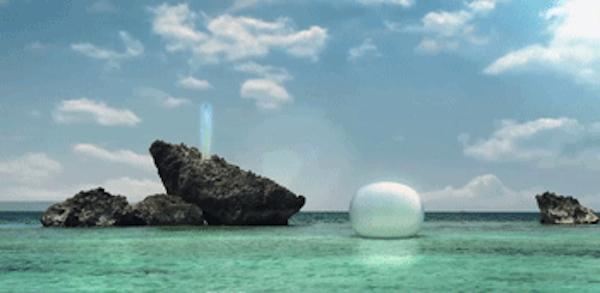The Royal Academy of Art has announced a new solo exhibition of work by the New York- based internationally acclaimed Japanese artist Mariko Mori. This will be the first major museum exhibition of the artist’s work in London for over 14 years. Mori’s most recent projects aim to inspire in people a new consciousness that celebrates our existing balance with nature, and reflects on universal themes of life, death and rebirth. Entitled Rebirth the exhibition will include some of Mori’s most acclaimed works from the last 11 years, many of which have never been shown in the UK, alongside new works created for the exhibition.
The exhibition will start and end with the death and birth of a star, pointing to an important theme of the show – the cycle of life and rebirth – and will include photography, works on paper, sound works, as well as sculpture and large scale immersive installations and environments that invite contemplation. The exhibition has been developed in close collaboration with the artist, and is timed to coincide with the winter solstice in 2012. According to ancient calendars, this year’s solstice will either mark the end of the world or the birth of a new era.
Since her first exhibitions in the mid-1990s, Mori’s practice has been rooted in both traditional and contemporary Japanese culture, and between East and West. Her works juxtapose contrasting aesthetic languages that have ranged from traditional tea ceremonies to Manga and cyber culture, fusing Shintoism and Buddhism with the hard planes of science and technology. Mori’s recent practice has evolved around a fascination with ancient cultures, among them prehistoric Jomon (c.14,000 – 300 BC) in Japan and Celtic traditions in Europe. Founded on a belief in cycles of death and rebirth, these were marked by a holistic world view that placed mankind in a more harmonious relationship with our surroundings. These interests are expressed through emerging technologies and digital media, which the artist embraces as tools to be harnessed in order to reconnect with our environment.
Exhibition highlights will include Mori’s most-celebrated works. Tom Na H-iu (2006), a place where transmigrate souls were believed to rest in ancient Celtic religion, is a large glass monolith five metres high, lit from within by hundreds of LED lights and connected to Super Kamiokande, Institute for Cosmic Ray Research at The University of Tokyo. The observatory detects neutrinos emitted by the sun, the earth’s atmosphere and during a supernova – the
explosion that marks the death of a star – and the work displays these in real time, in constantly changing light patterns.
Transcircle, a modern day Stonehenge, presents a series of nine totemic objects, arranged in a circle to resemble an ancient structure or site, and symbolises the solar system’s planetary movements, with each colour representing one planet. The colour of each changes depending on the position of the planets in the course of one year, their colour altering at different speeds in reflection of the time different planets take to orbit the sun.
The exhibition will also feature Ring (2012), conceived as a bridge connecting time and ritual, calling attention to the primal act of ‘prayer’ and the essential nature of humanity. Further highlights will include Flatstone (2007), an installation of 22 ceramic stones assembled to re- create an ancient shrine, with its entrance located in order to receive sunlight on the winter solstice; and White Hole (2011), which marks the end of the exhibition and considers the light patterns emitted at the rebirth of a star as it is released from the gravity pulls of Black Hole. This exhibition suggests the recurrence of life and death-much as the universe continually renews itself and discovers creation at every moment. For Mori, death is not the end, but beginning of new cycle.
Mariko Mori is an internationally acclaimed artist, whose work has been acquired by museums and private collectors worldwide. A major survey of her work, entitled Oneness, was held at the Groninger Museum, Netherlands; ARoS Aarhus Kunstmuseum, Denmark; and the Pinchuk Art Centre, Kiev, Ukraine in 2010, and travelling to Centro Cultural Banco de Brasil, Brasilia; Rio de Janeiro and Sao Paulo in 2011.
Mori’s solo exhibitions have been organised in institutions around the world, including the Museum of Contemporary Art, Tokyo; Centre Georges Pompidou, Paris; the Prada Foundation, Milan; the Museum of Contemporary Art, Chicago; the Dallas Museum of Art; the Brooklyn Museum of Art, New York; the Serpentine Gallery, London; and the Los Angeles County Museum of Art. Mori’s work was featured in the Royal Academy’s group exhibition Apocalypse in 2000.
Mori has received numerous international awards, including the prestigious Menzione d’onore at the 47th Venice Biennale in 1997 (for ‘Nirvana’) and the 8th Annual Award as a promising Artist and Scholar in the Field of Contemporary Japanese Art in 2001 from the Japan Cultural Arts Foundation.
Mariko Mori currently lives and works in New York.

